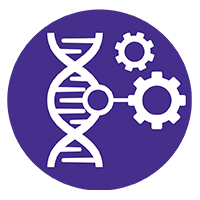Back
Advances in Therapeutic Development Across Modalities
Session: Symposium: Recent Advances in Gene Therapy
Translational and Dosing Considerations for Ocular AAV-Based Gene Therapy
Monday, April 24, 2023
10:00 AM – 10:30 AM ET
Location: Salon D, 5th Floor

Prathap Nagaraja Shastri, PhD
Scientific Director
Johnson and Johnson
Spring House, Pennsylvania, United States
Speaker(s)
Tremendous advancements in genetic engineering and biotechnology have propelled the development of novel therapeutic modalities including the cell and gene therapies. While there has been a significant growth in the development of AAV gene therapy however, several gaps and challenges continue to exist. For instance, conventional PK/PD concepts are not applicable, conventional allometric dose scaling approaches might be less precise, and hence there is no consensus on the utility of preclinical studies to select human doses for gene therapies. In spite this, few clinical AAV gene therapy programs used body weight or organ volume/surface area to scale preclinical doses to humans depending on the ROA. However, this approach is highly empirical and do not account for differences between species such as transduction efficiencies and transgene expression regulation. Recently, a novel concept of gene efficiency factor (GEF) based allometric scaling was introduced as a rational approach to select clinical doses based on preclinical studies and was applied for IV-administered AAV gene therapies used to treat Hemophilia. Whether such approaches can be applicable for locally delivered AAVs such as the eye remains to be investigated. This symposium presentation will discuss translational challenges and considerations in FIH human dose selection for AAV gene therapies. In addition, key preclinical and clinical data from several ocular (intravitreal and subretinal) AAV gene therapies will be summarized and observed dose-response (safety and efficacy) and dose-exposure (where available) relationships will be discussed. Finally, different scaling approaches (vitreous volume, retinal surface area, viral titer, GEF) will be used to retrospectively compute clinical doses and compared with the clinical observations to guide next steps in dose selection for ocular AAV gene therapy.
Learning Objectives:
- Get in-depth understanding of translational challenges and considerations in FIH human dose selection for AAV gene therapies
- Overview of key preclinical and clinical data available for ocular AAV gene therapies for different ROA (intravitreal and subretinal) and describe observed dose-response (safety and efficacy) and dose-exposure relationships
- To retrospectively compare, and contrast different scaling approaches (vitreous volume, retinal surface area, viral titer, GEF) to compute clinical doses and compare with the clinical observations

